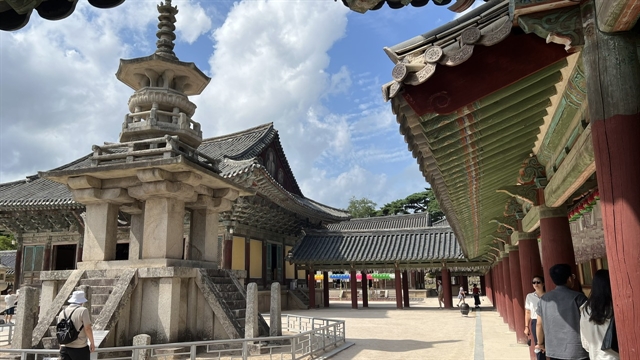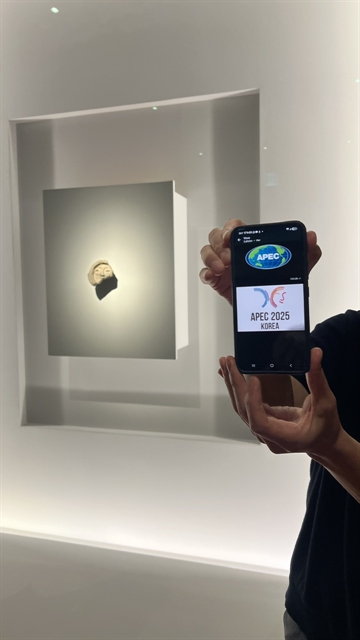The choice of Gyeongju reflects both cultural symbolism and the government’s strategy to spread international events beyond major metropolitan areas.

By Mai Hương
GYEONGJU — As world leaders, including US President Donald Trump and Chinese President Xi Jinping, prepare to converge on Gyeongju for the Asia-Pacific Economic Cooperation (APEC) summit in late October, South Korea's ancient Silla capital finds itself at the epicentre of global diplomacy and economic cooperation.
Gyeongju, some 270 kilometres southeast of Seoul, beat out Jeju and Incheon to host APEC 2025, bringing the summit back to South Korea for the first time since Busan in 2005.
The choice of venue reflects both cultural symbolism and the government’s strategy to spread international events beyond major metropolitan areas.
A historic backdrop
Gyeongju, a city in North Gyeongsang Province, often called a 'museum without walls', served as the capital of the Silla Kingdom for nearly a thousand years. The city’s cultural landscape features the Bulguksa Temple, Seokguram Grotto and royal tombs, many designated as UNESCO World Heritage sites.
Officials say the city’s history offers a distinctive backdrop for discussions on regional cooperation, stability and long-term development.
In an interview with global media, Park Jang Ho, director of the APEC Preparation and Support Office, said Gyeongju had preserved its heritage remarkably well, with no high-rise buildings and many traditional tiled-roof houses. Although its infrastructure might not be as modern as that of other major cities, its authenticity and cultural depth gave it unique advantages.
“The city intends to highlight these strengths rather than create artificial attractions,” he said, mentioning valuable cultural assets such as Hwangnyongsa Temple, Cheomseongdae Observatory, Woljeonggyo Bridge, Donggung Palace and Wolji Pond.
“Through APEC 2025, the city hopes to share this heritage with the world, as visiting leaders and delegates will naturally experience its history and beauty.”
As the summit approaches, visitors would notice subtle improvements across Gyeongju, though these are modest upgrades to ageing roads and parking areas rather than ambitious new constructions.
Park said the city's rigorous building codes remained firmly in place, preserving the balance between ancient heritage and modern needs.
Streets and public squares were being adorned with trees and flowering plants – a gesture deeply rooted in Korean hospitality culture, where welcoming guests with beauty and grace is considered an art form.
Environmental sustainability was also a top priority. Because of strict rules protecting archaeological sites, people often say: “You can’t dig in your own yard in Gyeongju, or you’ll find artefacts.”
The entire city is essentially an open-air museum, and construction activities are tightly controlled, according to Park.
The official envisioned that a successful APEC 2025 could pave the way for future summits in larger regional hubs such as Pohang or Daegu.

Linking heritage with the summit theme
While previous international gatherings in South Korea have taken place in Seoul, Busan or Incheon, the government argued that holding APEC in Gyeongju would bring economic and diplomatic opportunities to a different part of the country. The move aligns with the summit’s emphasis on inclusivity, a goal shared across the 21 APEC economies.
The Korea Chamber of Commerce and Industry estimates that APEC 2025 could generate about 7.4 trillion won (about US$5.2 billion) for Gyeongju, the fifth largest city of South Korea, and the surrounding region.
Beyond economic gains, the event is expected to raise Gyeongju’s international profile, helping it regain recognition as the historic capital of the Korean Peninsula and making it a more attractive destination for foreign visitors.
The city’s authorities have spent the past year preparing facilities to meet international standards. The Hwabaek International Convention Centre, named after an ancient Silla council of nobles, has been expanded and modernised to serve as the summit’s main venue.
Hotels, media centres and transport links are being upgraded, and the Bomun Tourist Complex – a resort area developed in the 1970s – has been improved to welcome delegates and visitors.
South Korea is preparing to welcome over 20,000 participants, comprising leaders and government officials from 21 member economies, as well as business executives and journalists.
Local businesses, from tour operators to restaurants, are gearing up for a surge in demand. The city is also promoting cultural programmes to introduce international guests to traditional crafts and performances.
South Korea has chosen the theme 'Building a Sustainable Tomorrow: Connect, Innovate, Prosper' for its APEC host year. Organisers say Gyeongju illustrates the connection between heritage and sustainability.
The city has promoted eco-friendly tourism, renewable energy projects and cultural preservation as part of its development strategy.
At the same time, the government is emphasising innovation. Although Gyeongju is best known for its cultural treasures, it is also linked to South Korea’s drive in digital technology and green industries. By placing APEC in a city outside the capital region, Seoul signals that progress and innovation are national, not just metropolitan, priorities.
For South Korea, APEC 2025 is more than a diplomatic gathering. By choosing Gyeongju, the government is projecting an image of a country that values both heritage and modernisation, while underlining the summit’s focus on sustainability, connectivity and innovation. — VNS





